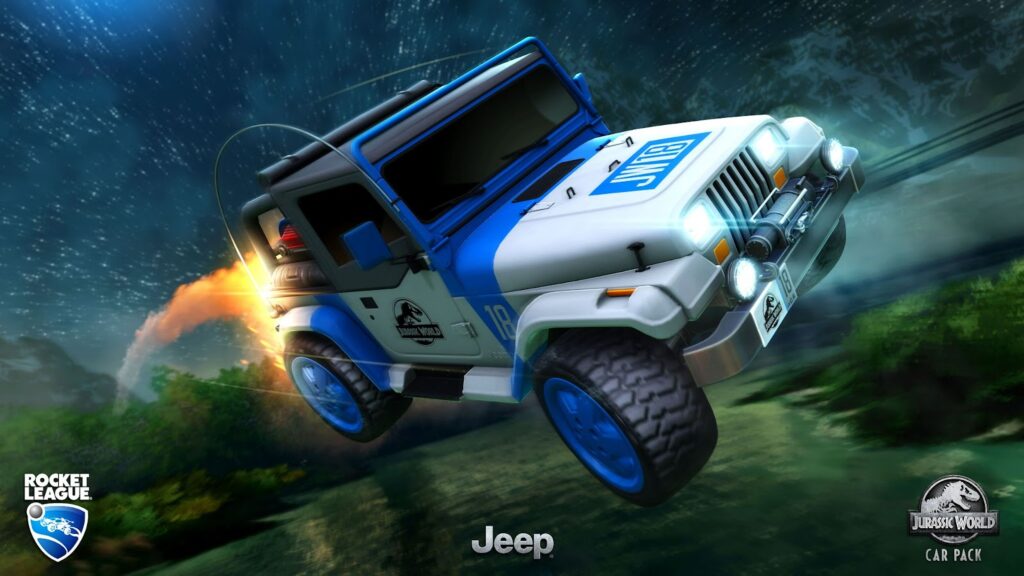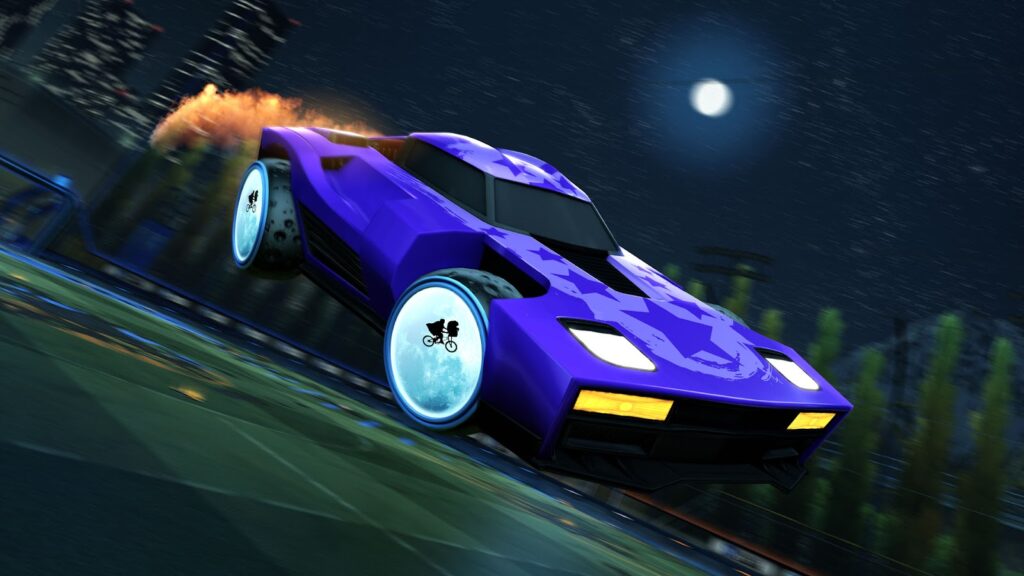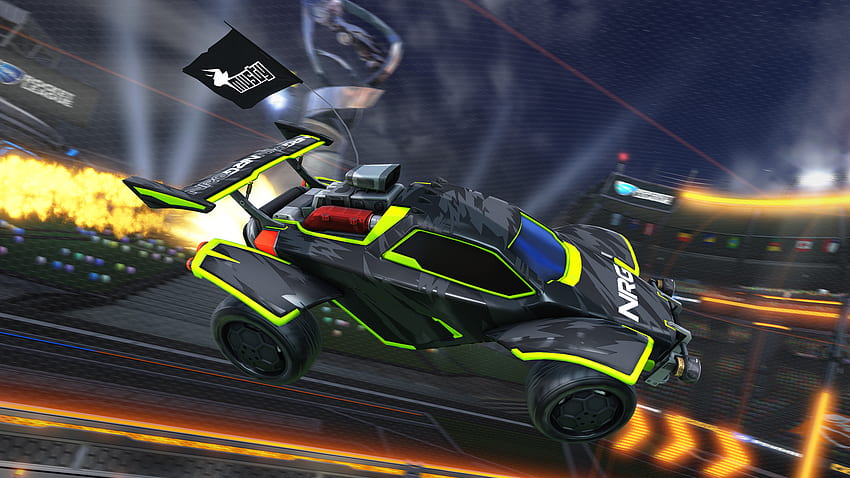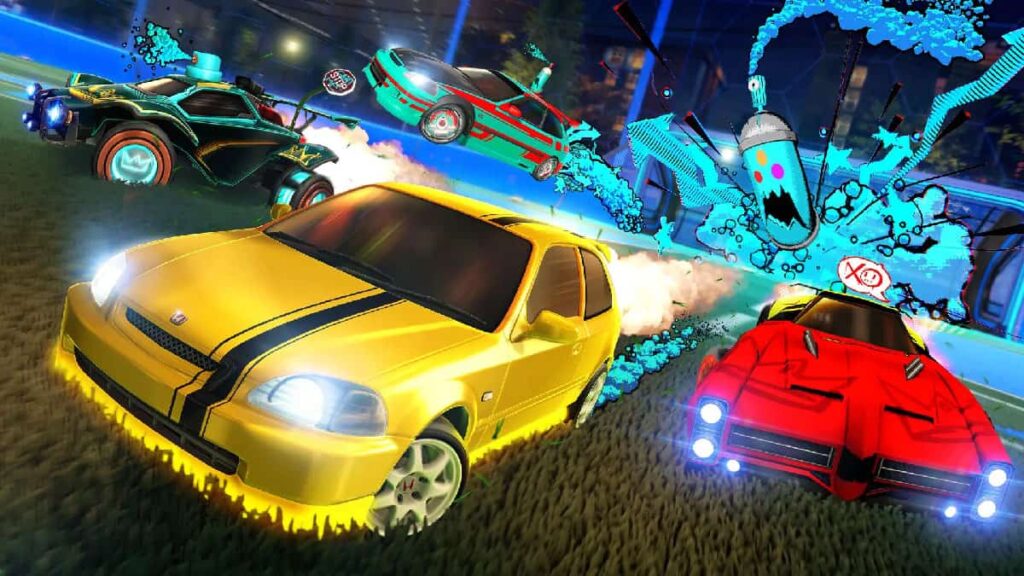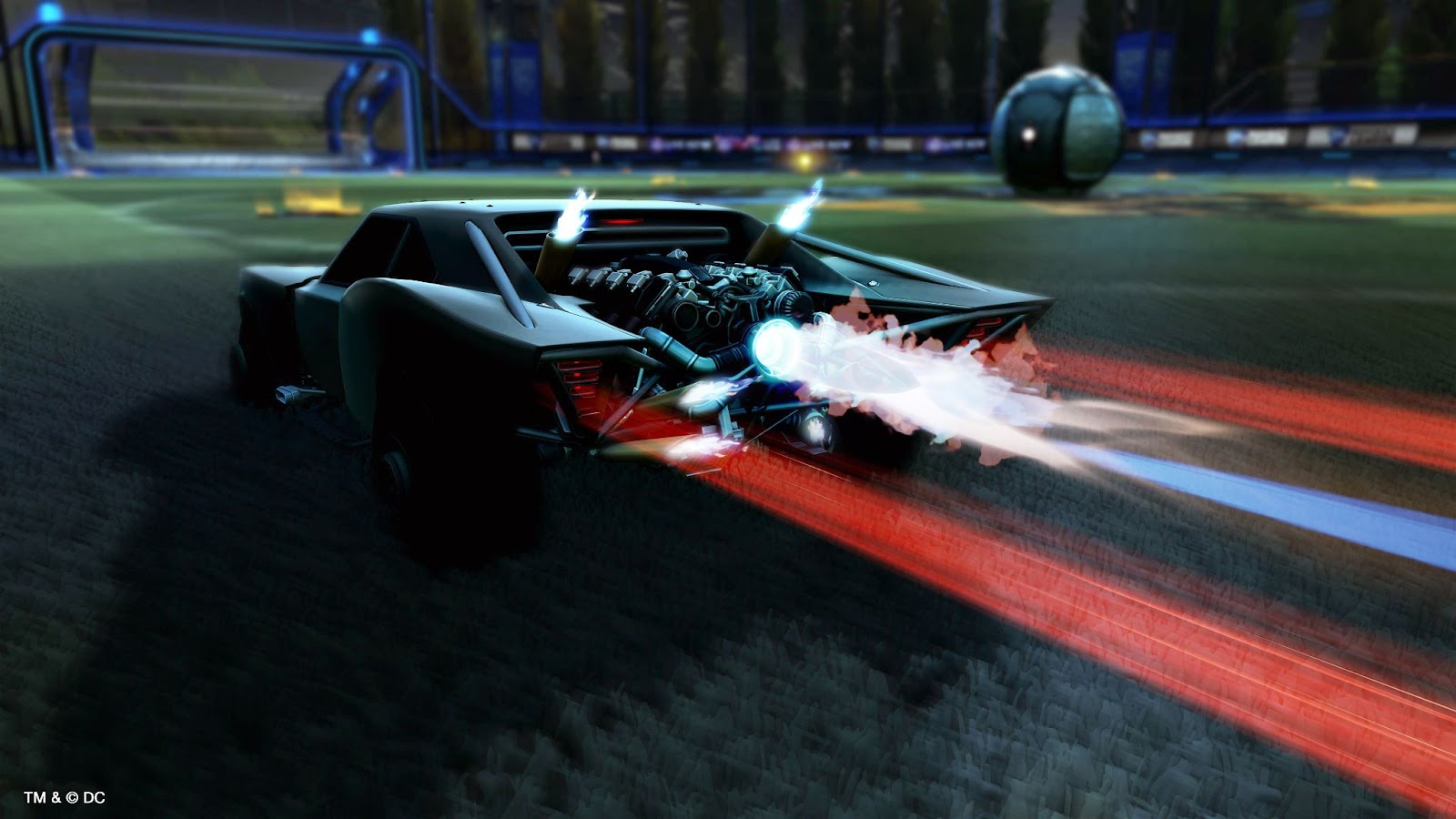
Do you want to rank up in Rocket League, but don’t know how?
This article will provide tips on improving your Rocket League rank fast. With our strategies, you can go up the ranks quickly and confidently, giving you an edge over your opponents. So read on and prepare to take your Rocket League skills to the next level!
Rank Disparity Rocket League
Rank disparity has been an issue in Rocket League for some time. This refers to the difference in ranked or competitive divisions between individual players of different skill levels, and how this affects matchmaking. For example, rank disparity can arise when a high-skilled player is paired with other players too far below their skill level, leading to significantly uneven games.
The goal of matchmaking should be to give every player enjoyable games by pairing them with players of similar skill level. Unfortunately, rank disparity makes this less likely to occur in Rocket League due to the game’s dynamic nature. In addition, the discordance between two individual MMRs (Match Making Ratings) affects matchmaking decisions since everyone simultaneously plays against each other in online matches. This can lead to unenjoyable uneven matchups for all parties involved, regardless of their skill level.
Rank disparity works both ways and can be compounded if not addressed; low-ranked players may become disheartened by repeated losses in the face of more experienced opponents and rapidly lose interest in the game, rather than being encouraged by more balanced matchups when they’re just starting. Similarly, higher-ranked players may become frustrated if they consistently have to carry every game because their teammates lack knowledge or experience needed for victory.
Rocket League developers have taken steps over recent years to address rank disparity issues by introducing ranking systems within each region with distinct MMRs, as well as allowing players who belong together on one team (friends or an established team) play together despite differences in rank provided there is no more than a 750-point difference between them. However, this hasn’t completely solved the problem. Further measures may need to be taken through tighter rankings restrictions, better penalties for abandonment/inactivity during matches or introducing MMR balancing based on individual performance during a single match rather than averages over multiple games played at different times.
MMR Ranks Rocket League
MMR (MatchMaking Rating) ranks are a major factor in competitive Rocket League. Rocket League uses a ranking system called the “Rocket League Ranking System,” or RLRanking for short. There are nine tiers, each broken into several divisions numbered from one to four, four being the highest within that tier. Rising through these divisions and tiers requires winning placement matches and gaining enough teammate rapport to contribute positively to win games. MMR ranks differ from other game rankings systems due to frequent updates and an ever-changing player base.
MMR rankings have tiers starting with Bronze I up to Grand Champion which is currently considered the highest MMR rank achievable in the current iteration of Rocket League. There is also a Champion 1 Tier which sits at about 2300 MMR where players can no longer compete in the ranking sprints with it being too high of an MMR for such ranking sprints, but can still compete on the leaderboard by simply playing online ranked matches with other players around their MMR level.
Overall, being aware of your overall MMR rank compared to your peers can be very important in giving you an understanding of how well you’re playing against others and potentially gives players motivation or goals when continually playing Ranked Performances or Placement Matches season after season trying to rise through different Tiers and Divisions until ultimately reaching Grand Champion where they will typically play among some of the best players that Rocket League has to offer!
Old Rocket League Ranks
In the old ranking system of Rocket League, players were placed in different tiers based on their skill level and competitive performance. Players would climb through the tiers until reaching the highest rank, Grand Champion. The ranking system comprised nine tiers, each divided into three divisions. The lowest tier, Unranked, served as a starting point for every new-player and their progress was tracked through a series of promotional or demotional matches until they reached one of nine ranked tier levels. Below is a breakdown of all the ranks that were available before Season 9:
Unranked -No Skill Rating (SR) assigned
Bronze I -Minimum SR range 0-699
Bronze II -Minimum SR range 700-799
Bronze III -Minimum SR range 800-899
Silver I -Minimum SR range 900-999
Silver II -Minimum SR range 1000-1099
Silver III -Minimum SR range 1100-1199
Gold I -Minimum SR range 1200-1299
Gold II -Minimum SR range 1300-1399
Gold III – Minimum SR range 1400 –1499
Platinum I – Minimum SR 1500 –1599
Platinum II – Minimum SR 1600 – 1699
Platinum III – Minimum sr 1700 – 1799
Diamond I – Minimum sr 1800 – 1899
Diamond II – Minimum sr 1900– 1999
Diamond III – Minimum sr 2000+
Grand Champion– Highest Rank Reached
MMR Rocket League Rank
Matchmaking Rating (MMR) is a numerical value used in Rocket League to match players of similar skills levels in online matches. MMR is calculated differently for each game type and is based on a player’s performance in previous Rocket League matches. Therefore, the formula for calculating MMR differs from one game to the next and can be affected by factors such as: win percentage, wins and losses, points scored, etc.
MMR can be affected by several factors, but the basic idea is that it is adjusted based on how often you win or lose a match-up against opponents of similar skill level. The higher your MMR, the more difficult opponents you will face when playing Rocket League. The lower your MMR, the easier opponents you will face. Your MMR also affects your rank when entering ranked games and competing in official tournaments.
Every ranked player has a hidden rank corresponding to their position each season in the Rocket League ladder system. This rank will become visible each season once promo series have been completed and remains visible until the end of that season when it is reset upon reaching Diamond I or higher divisions. Each division has its own MMR, which increases with every ranked win until it reaches its maximum value for that season at Diamond I & Grand Champion Divisions. Players with higher MMR generally have an advantage over players with lower ranks as they are likely to experience tougher competition when playing in higher divisions than those with lower rankings.
All Ranks Rocket League
Rocket League is one of the most popular sports video games today. As with many competitive games, a player can achieve various ranks or tiers. The rank disparity in Rocket League ranges from Prospect to Grand Champion III, the latter for the most competitive players.
Each rank has its range of ranks displaying different skill levels, such as Bronze I to Bronze III, Gold I to Gold III, and so on up the ladder. The higher your rank is within a tier range, the more experienced you are perceived to be in Rocket League play. As a result, players often strive for higher rankings because this offers a competitive edge over their peers and communicates proficiency at a glance when other players analyze their achievements.
To achieve a higher rank threshold, thresholds regarding competitive points earned and player skill level need to be met. This includes criteria like goal scoring accuracy and possession-time during a match; plus win rate (the percentage of games won) needs to stabilise at an acceptable level for each subsequent tier level achieved over time.
MMR To Rank Rocket League
MMR or MatchMaking Rating is a hidden accumulative rating system used in Rocket League. It is a number used to represent your skill level which is hidden from other players, but affects the matchmaking algorithm and determines which matches you will be in. MMR is used to assign (or rank) players into different tiers of play: Bronze, Silver, Gold, Platinum, Diamond, and Champion. It allows the player’s skill level to be paired with others similar in ranking.
In Rocket League Competitive playlists (e.g., 3v3 Standard), MMR contributes more toward the placement/promotion system than wins/losses. This is because placement matches are designed to identify a player’s skill level and accurately rank them against others in their region. So, for instance, if you finish placement matches with a Bronze rating on 3v3 Standard playlist, likely, your MMR on that playlist is somewhere near the lower end of Bronze tier — even if you have all wins or losses during placement matches.
As for Grand Champ & Supersonic Legend ranks – these two tiers have no MMR threshold; instead it’s purely based on number of wins when playing in Competitive 3v3 Standard playlist (at least 10 consecutive wins are required). Along with being placed in a tier based on your MMR or number of wins you will also receive rewards based on your end-of-season rank – the higher your entire ranking of Competitive Playlists gets, the bigger rewards you’ll receive at season end for each specific Playlist type!
Rank MMR Rocket League
The Rocket League Rank/MMR (Matchmaking Rating) system allows players to measure their skill-level and rank up against other players online. It is an essential part of the game and helps ensure that each player is matched against opponents of similar ability.
Rank/MMR is determined by a player’s ability to win games. Every match, a player’s score is compared with that of their opponents, and if the score gap between them exceeds a certain level, the winning player gets more MMR than the losing player. If this happens consistently over several matches then the MMR gap between them will increase, resulting in the winning player moving up through the ranked tiers.
However, there can be some disparity in MMR due to factors such as luck or lack of coordination on your team which can cause matches to not reflect an accurate assessment of skill. For example, in one match, you may perform well and climb ranks quickly, in another, you may perform poorly and move down despite still holding your own among teammates. Rocket League attempts to counter this by broadening its mmr metric pool, but rank disparity can still occur depending on several factors.
In order to counter this phenomenon, many Rocket League teams have implemented regular practice sessions where players focus on working together more frequently to minimize rank disparities when playing against one another online.
Ranks Rocket League MMR
Rocket League Match Making Rating (MMR) measures a player’s skill level. It matches players with opponents of similar skill levels to ensure fair and balanced matches. MMR can be determined for each game mode remotely – solo standard, solo duel, standard, and doubles – and is calculated through a combination of factors including wins/losses, goals scored/against and matchup difficulty.
The rank system in Rocket League determines which ranked bracket the player is in based on their MMR. There are 11 ranks based on MMR; Bronze I-IV, Silver I-IV, Gold I-IV, Platinum I-III and Diamond. Players may move up or down within their rank tier depending on how they perform against players in the same tier as them. Once they reach Diamond they become eligible for Champion Rank, requiring additional performance metrics to be promoted or demoted.
The rank disparity between two players can also be determined by looking at their respective rankings within the game – higher ranked players get matched with those with similar or better rankings than them whereas those lower ranked will be paired with those at the same or slightly higher ranking than themselves. While these brackets cannot give you an absolute measure of your skill level compared to another person’s, they provide a reference point from which one can make assumptions regarding skillsets when playing Rocket League online.
Rocket League Comp Ranks
Competitive Ranks in Rocket League measure players’ ability to play the game. Every ranked season, players start at rank 15 and play in a series of games to rank up or down one full rank according to the outcome of their matches. This can create a disparity between players who have quick reflexes and solid technical skills, and those who do not. There are currently 10 ranks available in the game: Bronze, Silver, Gold, Platinum, Diamond, Champion, Grand Champion I-III.
Bronze is the lowest ranking and is reserved for players who have yet to prove their skills or develop enough knowledge to move up into silver. Players with bronze ranks often feel frustrated as they progress due to stiff competition from silver level players while still needing time to develop their skills further.
Silver is slightly better than bronze and is reserved for more experienced players with better technical skills than bronze-level players. Usually silver level players have already began gaining confidence in the game and are ready to take on tougher competition they may find while playing in diamond or champion levels.
Gold is generally seen as an average level player in Rocket League where most gamers hang out who can handle mid-level competition when required but aren’t too good for those below them. Gold also serves as a stepping stone for aspiring gamers wanting to learn how fast paced action works in rocket league before attempting more difficult ratings such as platinum or diamond.
Platinum comes after gold offering experienced gaming mechanics that dictate how users handle complex techniques such as boosting, passing and defending from stronger opponents without getting caught off balance easily making them quite valuable when it comes down against competing teams that struggle with the same concepts and techniques being presented thus resulting of handpicked teams that come together quickly enough due avoiding faulty practices thus making platinum users quite hot commodities depending on where they lie within competitive rankings amongst peers arguing over what’s fair versus what isn’t making it difficult on select few looking past this measure looking towards higher kombat ground such as championship levels alike if given chance by being accepted amongst fellow team members within jurisdiction since powerhouses like these should never sail unaccompanied just yet!
Diamond goes beyond platinum offering even greater advantages than before through highly skilled behavior outscoring opponents at much faster rates leading towards winning overall creating an even bigger reward by aggregating not only points but rewards themselves unlocking some achievements hidden within game itself depending on skill acquired throughout matches results needing Diamond tier equivalent or higher pending overall gamer performance respective sending those delving into Grands Champions label within short amount time becoming topnotch showstoppers roaming once dusty servers surrounded by other overly respected counterparts simply said Grandmasters leading least talked about Champions mission while ensuring success ever after that!
MMR For Each Rank Rocket League
For those playing the competitive Rocket League, the MMR (Matchmaking Rating) measures performance and ability that determines players’ divisions. It is also known as ELO, which was originally used in chess. The MMR system for Rocket League ranks players in 5 different positions ranging from Bronze-Champion with their own MMR ratings.
When a player joins a ranked match, they are presented with six available options in their division i.e., Bronze I through V, Silver I to V, Gold I to V etc. All ranks in Rocket League are assigned MMR values that determine how players are placed within these divisions and tiers.
Rocket League follows an 18-tier system, which corresponds to each of the MMR ratings listed below:
- Bronze I – 990-1199 MMR
- Bronze II – 1200-1399 MMR
- Bronze III – 1400-1599 MMR
- Silver I – 1600–1799 MMR
- Silver II – 1800–1999 MMR
- Silver III – 2000–2199 MMR
- Gold I – 2200–2399 MMR
- Gold II – 2400–2599 MMR
- Gold III – 2600–2799 mmr
- Platinum I – 2800–2999 mmr
- Diamond I – 3000–9999 mmr
- Champion – 10000+ mmr
Rocket League Hours To Rank
The amount of time required to reach certain ranks in Rocket League can vary. Generally, the higher the rank, the more time it will take to reach it. However, individual skill level and win-loss record can also influence this.
Players can move up the ranking tiers if they consistently win games, but there may be times when losses cause them to lose some ground. This is normal and part of the game experience. Players unfamiliar with playing at a higher level may find that it takes longer than anticipated to get accustomed to their new ranking bracket.
Generally speaking, most players need 10-20 hours of playtime for each rank until around Gold 1 or Gold 2; about 20-30 hours for Platinum; and 30+ hours for Diamond 1 & 2. Grand Champions tend to have put in substantially more time over larger skill gaps across all playlists.
Rocket League Elo Ranks
Rocket League Elo ranks are calculated using a numerical value, similar to the system used in chess. This numerical value is based on a player’s performance and is designed to assess their ability level. In addition, it indicates what kind of players someone will be matched up with during online matches.
The Rocket League Elo rankings range from Unranked up to Grand Champion. Starting from Unranked, each rank progresses through Bronze, Silver, Gold, Platinum, Diamond, and Champion before culminating in Grand Champion. Every rank has four divisions within it apart from Unranked which has five divisions to indicate different levels of ability within the same rank. A player must achieve wins in each division before moving to the next one and level up their Elo ranking accordingly.
Your Elo rating constantly changes depending on your performance – win or lose – so you can view your real-time progress while playing online matches. The purpose of these ratings is to match players together who have similar rankings and therefore make the game more fair and enjoyable for everyone involved.
Ranks Rocket League 2021
Rocket League ranks allow players to measure their skill level and give them goals to strive for as they play. Ranks range from Bronze 5 (lowest) to Grand Champion 5 (highest), as well as “Prospects” and “Challengers,” depending on the game type. Each rank division must be unlocked in sequence, starting at Bronze 5 moving up to Gold 3, Platinum 1, Diamond 1 and so on. A player’s current rank is determined at the end of every game by the total number of points they earn based on individual performance during the match.
In 2021, Rocket League introduced a more unified ranking system encompassing all playlists. This means that players now progress through the same ranks regardless of their competitive or casual mode choice. Additionally, point thresholds have been tightened to account for potential disparities between competitive and casual sessions. Finally, with this new system comes changes in titles awarded for each rank which serve as a sign of mastery. As before, each step of progression through Rocket League’s ranks requires hard work and dedication from players looking to show their advanced skill sets off online or against friends.
Rocket League April Fools Ranks
Rocket League is an online multiplayer video game developed and published by Psyonix which combines the gameplay of soccer with that of racing video games. On April 1, 2020, the game introduced a new ranking system called April Fools Rank Disparity to celebrate April Fool’s Day.
This jocular ranking system replaced the competitive play format used in Rocket League competitive play. For each region however, the top 500 players were deemed “unrankable” and enjoyed the special rank of ‘April Fool’. The special ranks ranged from Gold I – Infinity (the lowest at Gold III) but with various names such as ‘Cheese’ instead of Bronze and ‘Cinderblock’ instead of Diamond. The intention was to give everyone a bit of flavor when playing Rocket League and an extra challenge as it is unclear where one’s rank stands within this strange system.
The ranks are no longer active and players have returned to the standard competitive play format offered by Rocket League. Nevertheless, many have fond memories — or nightmares — of their brief foray through the world of April Fools Rank Disparity in Rocket League.
Percentage Of Players In Each Rank Rocket League
To better understand the percentile breakdown for each ranked tier in Rocket League, it is necessary to consider both the size of the sample data used to generate this content and any statistical anomalies that could distort the results. The data is collected from a large sample of players in various Global Matchmaking regions at different times over a single weekend.
Due to its snapshot nature, some outliers within specific ranks MAY be factored into the overall data set, causing distortions within each rank’s averages. For example, this can be seen when looking at Grand Champion (GC) or higher tiers which commonly have high expectations due to the level of competition required.
The following information outlines estimated percentage distributions for each ranked Tier across all platforms and servers. Percentage of players by Rank:
-Grand Champion: 0.9%
-Champion III: 2.1%
-Champion II: 3.2%
-Champion I: 5%
-Diamond III: 7%
-Diamond II: 11%
-Diamond I: 18%
-Platinum III: 27 %
-Platinum II :34 %
-Platinum I :39 %
-Gold III :45 %
-Gold II :49 %
-Gold I :53 %
-Silver III :59 %
-Silver II :63 %
-Silver I :67 %
-Bronze III :72 print
-Bronze II 79 %
-Bronze I 83%.
Rank Rocket League Division
Rocket League Division divides players into tiers based on skill level and game-play. As a player’s performance and experience level increases, so does their “division”. These divisions are divided into four tiers; Bronze, Silver, Gold and Platinum. Additionally, each tier is divided into three divisions numbered from one to three, except for Platinum which has only one division.
Bronze: This is the lowest ranked tier in Rocket League Division and generally contains players with the least skill and experience competitively playing the game. Players in this tier have the potential to move up after gaining more experience and improving their skills on the field.
Silver: This tier contains players who have competed in a few online tournaments, achieved moderate success, or moved up from Bronze Tier by demonstrating clear gameplay improvement. Players here can move up to Gold Tier by continuing to hone their skills as they regularly compete against higher-ranked opponents in tournaments or against other highly skilled players.
Gold: This is the highest ranked tier before reaching Platinum status which contains highly advanced players that compete against each other or participate in tournaments regularly. Those who make it to this tier possess far superior skills compared to those found in Silver Tier as they can consistently defeat lower skilled opponents with relative ease. Furthermore, each set of divisions within gold are distinguished through MMR points which further sets apart experienced from new players at this competition stage.
Platinum: The apex tier for most Rocket league professionals that have achieved consistent success after competing against very skilled opponents for some time now.. Reaching here rewards you with stat tracker badges for showing off your accomplishments and earning recognition amongst your peers as someone who has mastered Rocket League Division mechanics at an elite level!
Rank Rocket League Point
Rocket League players are ranked on a seasonal basis according to an in-game ranking system called Rocket League Ranking (RLRank). Rankings are based on a player’s Matchmaking Rating (MMR) and rank points (RP). From lowest to highest, the rankings are Bronze, Silver, Gold, Platinum, Diamond, Champion and Grand Champion.
At the beginning of each season, all players start at Bronze III with 0 RP. As they complete online matches, they gain or lose RP based on their performances in those matches. If a player reaches 100 RP at any point during a season, they will advance to the next level and their RP will be reset to 0. If a player falls below 0 RP during the season, they will not be demoted but must win back enough games to raise their RP above 0.
When a player reaches the Grand Champion level at 10K MMR or higher, their rank becomes “hard-capped” which means that even though they may win more games than someone at 10K MMR, their rank cannot increase beyond that until they reset all of their stats. This prevents players who have achieved high rankings from having an unfair advantage over other players while helping new players quickly make it into higher rankings within the same season.
Rank Tracker Rocket League
Rank Disparity Rocket League is a system designed to simulate how difficult it will be for players of different skill levels to compete. It is designed considering MMR (Match Making Rating), the level of Rocket League experience, and the number of players playing with or against each other. As a result, this system provides a better insight into the various levels of competition within the Rocket League community.
Players can use Rank Disparity to track their performance and set improvement goals. With this system, players can get an idea of what rank they need to earn to improve and compare their rank and MMR with other players around them. The tracking feature also allows players to measure progress over time and set achievable goals for improvement for themselves or for competing with friends at closer ranks.
Rank Disparity also serves as a resource for Rocket League tournaments and leagues, providing information on which teams are evenly matched according to player MMRs and individual player rankings within those teams. This will help tournament administrators create a fair competitive environment, ensuring that each team is justly rewarded by fitting their skill level in a particular game rather than being unfairly advantaged because they have higher-skilled members on their roster.

